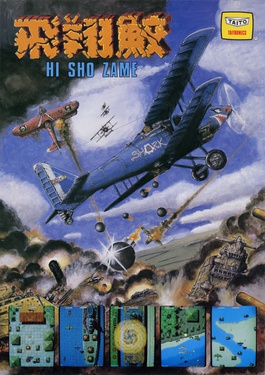
Flying Shark, known as Sky Shark in North America, is a 1987 vertically scrolling shooter arcade video game originally developed by Toaplan and published by Taito in Japan, Romstar in North America and Electrocoin in Europe. Controlling the titular biplane, the players must fight endless waves of military vehicles while avoiding collision with their projectiles and other obstacles. The plane has a powerful bomb at its disposal that can clear a portion of the screen of bullets and damage enemies when fired. It was the third shoot 'em up game from Toaplan, and their eighth video game overall.

Road Runner is a racing video game based on the Wile E. Coyote and Road Runner shorts. It was released in arcades by Atari Games in 1985.

Shoot-'Em-Up Construction Kit is a game creation system for the Commodore 64, Amiga and Atari ST created by Sensible Software and published by Outlaw in 1987. It allows the user to make simple shoot 'em ups by drawing sprites and backgrounds and editing attack patterns. The advertising promoted the Kit with the phrase "By the programmers of Wizball and Parallax".
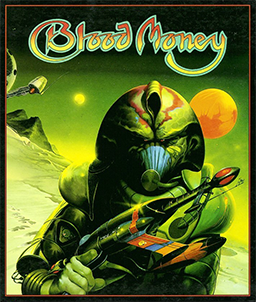
Blood Money is a 1989 side-scrolling shooter video game developed by DMA Design and published by Psygnosis. It was released for the Amiga, Atari ST, and MS-DOS in 1989, and for the Commodore 64 in 1990. The game is set in four different locations on a planet, where the player must fight off enemies and bosses.
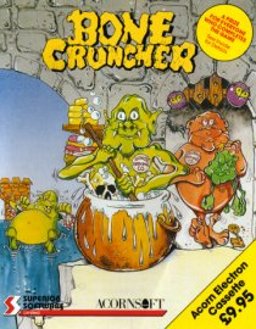
Bone Cruncher is a puzzle video game for the Acorn Electron, BBC Micro, and Commodore 64 first published by Superior Software in 1987. It uses the "rocks and diamonds" mechanics of Boulder Dash. An Amiga version was released in 1988.

Time Bandit is a maze shoot 'em up written for the TRS-80 Model I by Bill Dunlevy and Harry Lafnear and published by MichTron in 1983. It was ported to the TRS-80 Color Computer and Dragon 32, but enjoyed its greatest popularity several years later as an early release for the Atari ST. It was also released for the pseudo-PC-compatible Sanyo MBC-55x with 8-color display. Amiga and MS-DOS versions were ported by Timothy Purves.
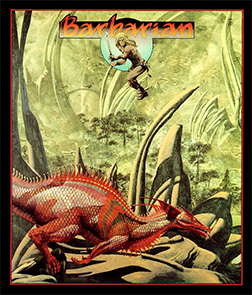
Barbarian is a 1987 platform game by Psygnosis. It was first developed for the Atari ST, and was ported to the Amiga, Commodore 64, MS-DOS, MSX, Amstrad CPC, and ZX Spectrum. The Amiga port was released in 1987; the others were released in 1988. The cover artwork is by fantasy artist Roger Dean.
Wizardry is an adventure game with some action and role-playing elements, published by The Edge in 1985 for the Commodore 64. It was programmed by Steven T. Chapman and the music was composed by Clever Music under the alias of Mike Alsop.

World Tour Golf is a 1986 video game by Evan and Nicky Robinson, Paul Reiche III and published by Electronic Arts for Commodore 64, Amiga, Apple IIGS, and DOS.

Cops 'n' Robbers is a video game published by Atlantis Software in 1985 for the VIC-20 and in virtually identical form on the Commodore 64. It was ported to the Commodore 16 and Commodore Plus/4 (1986), Acorn Electron and BBC Micro (1987), and Atari 8-bit computers (1988). The game was controversial when released as the player takes the role of a robber and must shoot the police.

Dream Zone is an adventure game developed by JAM Software and published by Baudville. It was released in 1988 for the Apple II and Apple IIGS, followed by versions for MS-DOS, the Amiga, and the Atari ST.

Light Force is a 1986 vertically scrolling shooter designed by Greg Follis and Roy Carter, developed by their company Gargoyle Games, and published under their Faster Than Light imprint. It was released for the Amstrad CPC, Commodore 64, and ZX Spectrum platforms.

The Real Ghostbusters is a 1987 shoot 'em up arcade game developed and published by Data East. It is loosely based on Ghostbusters. In Japan, Data East released it as a non-Ghostbusters arcade game under the title Meikyuu Hunter G. In 1989, Activision published The Real Ghostbusters for Amiga, Amstrad CPC, Atari ST, Commodore 64, and ZX Spectrum.
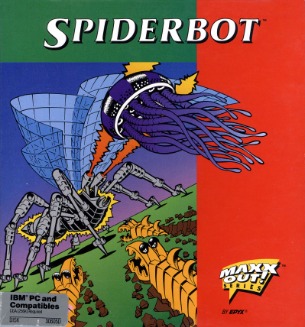
Arac is a side-view action-adventure game first released for the Commodore 64 in 1986 and ported to the Apple II and DOS.

Parallax is a shoot 'em up video game developed by British company Sensible Software for the Commodore 64. It was released in 1986 by Ocean Software in Europe and Mindscape in North America. The game was named after its primary graphical feature, parallax scrolling, which gives the illusion of depth to side-scrolling video games. On release, reviews praised the game's mix of traditional side-scrolling action and adventure game-inspired puzzles.

P-47: The Phantom Fighter is a 1988 horizontally scrolling shooter arcade video game originally developed by NMK and published by Jaleco. Set during World War II, players control a Republic P-47 Thunderbolt fighter aircraft to face against the Nazis, who are occupying multiple countries around the world. Its gameplay involves destroying waves of enemies, picking up power-ups and new weapons, and destroying bosses. It ran on the Mega System 1 hardware.
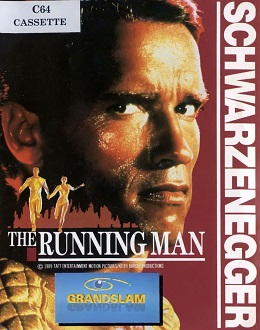
The Running Man is a 1989 beat 'em up video game based on the 1987 film of the same name. It was developed by Emerald Software and published by Grandslam Entertainments for Amiga, Amstrad CPC, Atari ST, Commodore 64, and ZX Spectrum.

Judge Dredd is a 1991 platform shoot 'em up video game based on the character of the same name. It was developed by Random Access and published by Virgin Mastertronic. It was released in Europe in 1991, for the Amiga, Atari ST, Commodore 64, and ZX Spectrum. Critics found the gameplay repetitive.
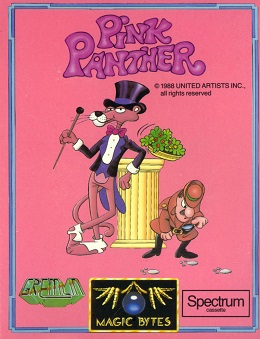
Pink Panther is a 1988 video game based on the character of the same name. It was developed by German company Magic Bytes and published by Gremlin Graphics. It was released in Europe for Amiga, Amstrad CPC, Atari ST, Commodore 64, and ZX Spectrum. Pink Panther was criticized for its control and difficulty, although the Amiga and Atari ST versions received praise for their graphics.
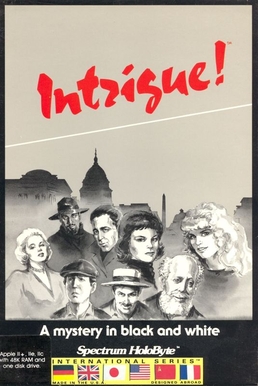
Intrigue! is an adventure video game developed by Kinemation and published by Spectrum HoloByte for Apple II and Commodore 64 in 1986.



















